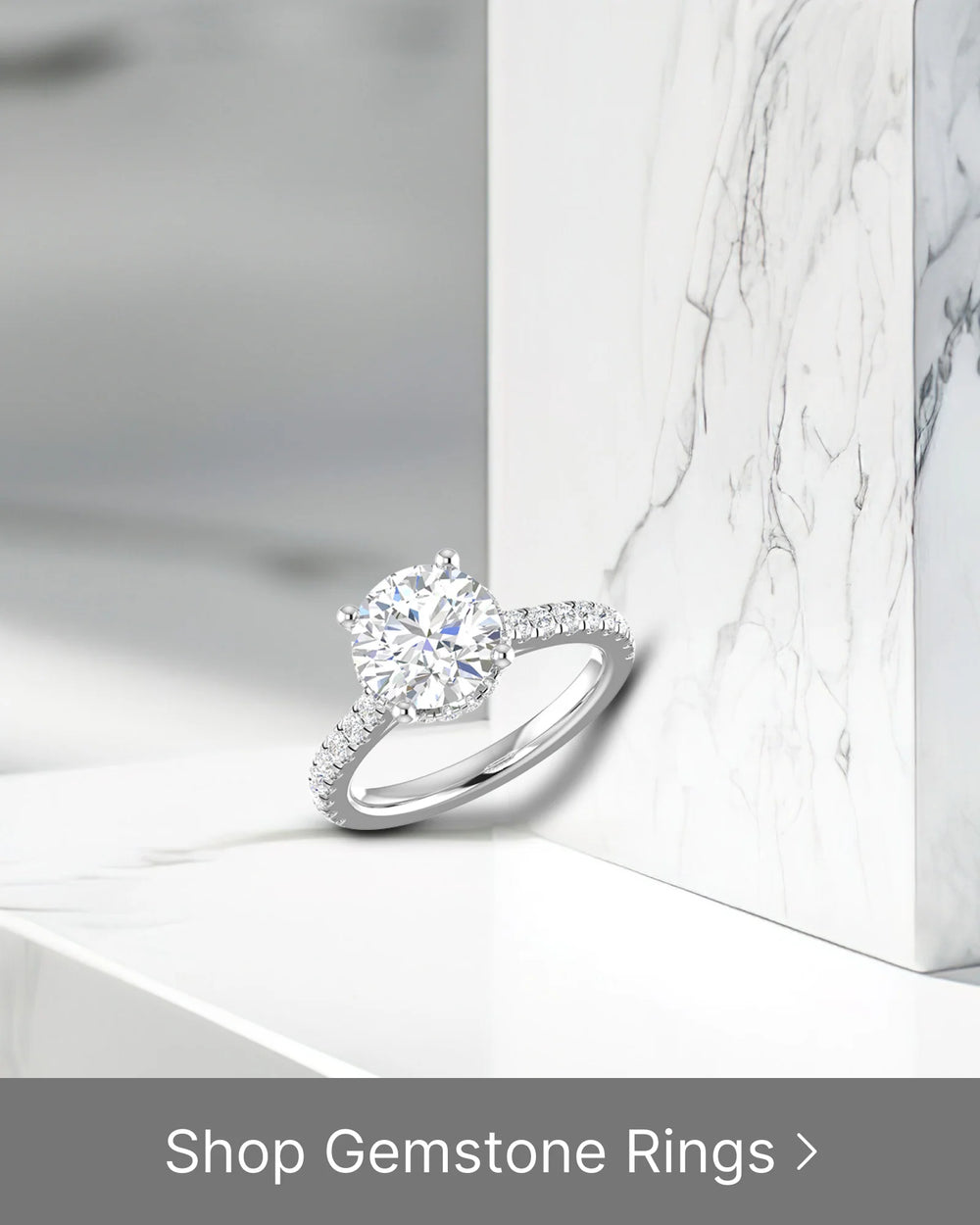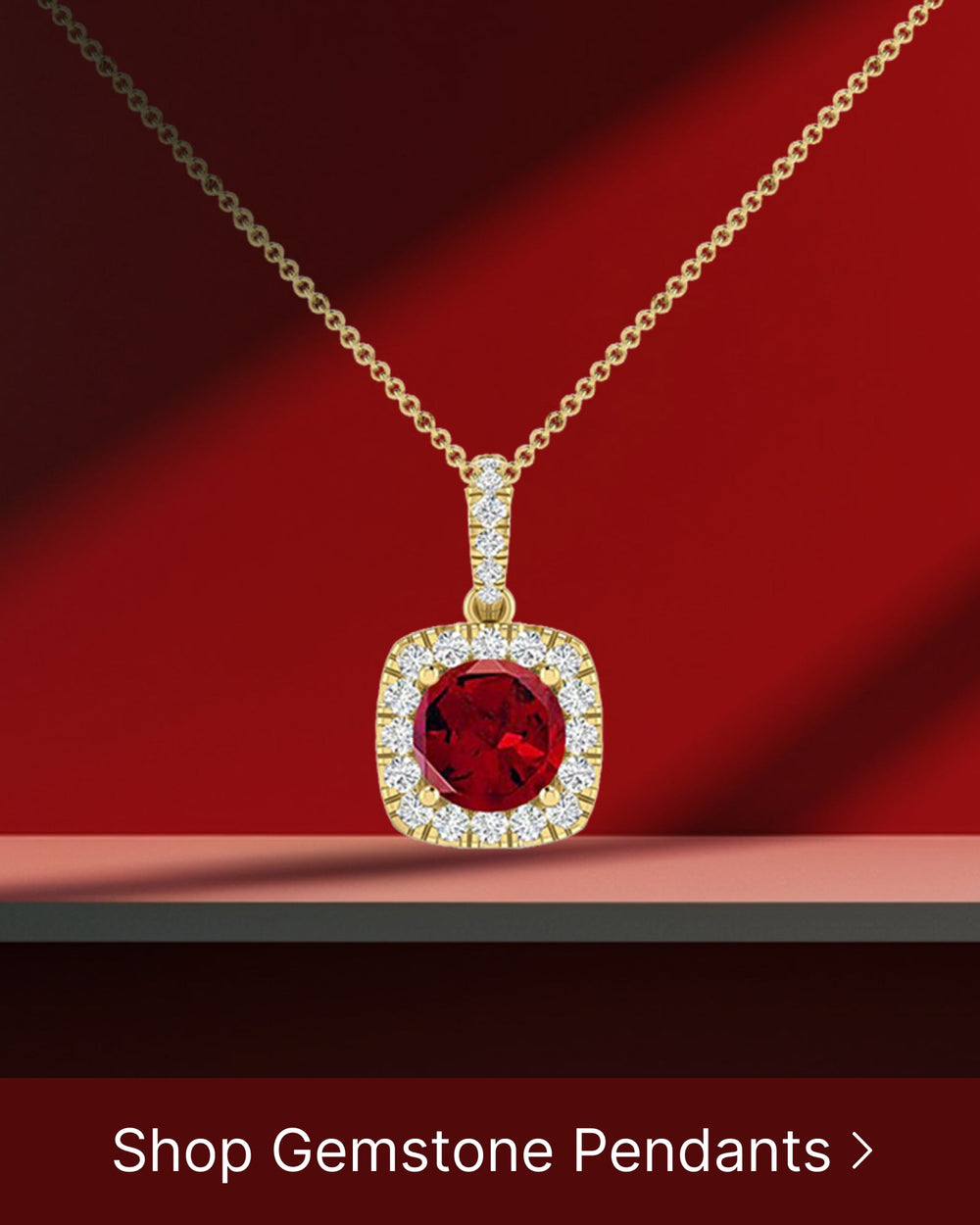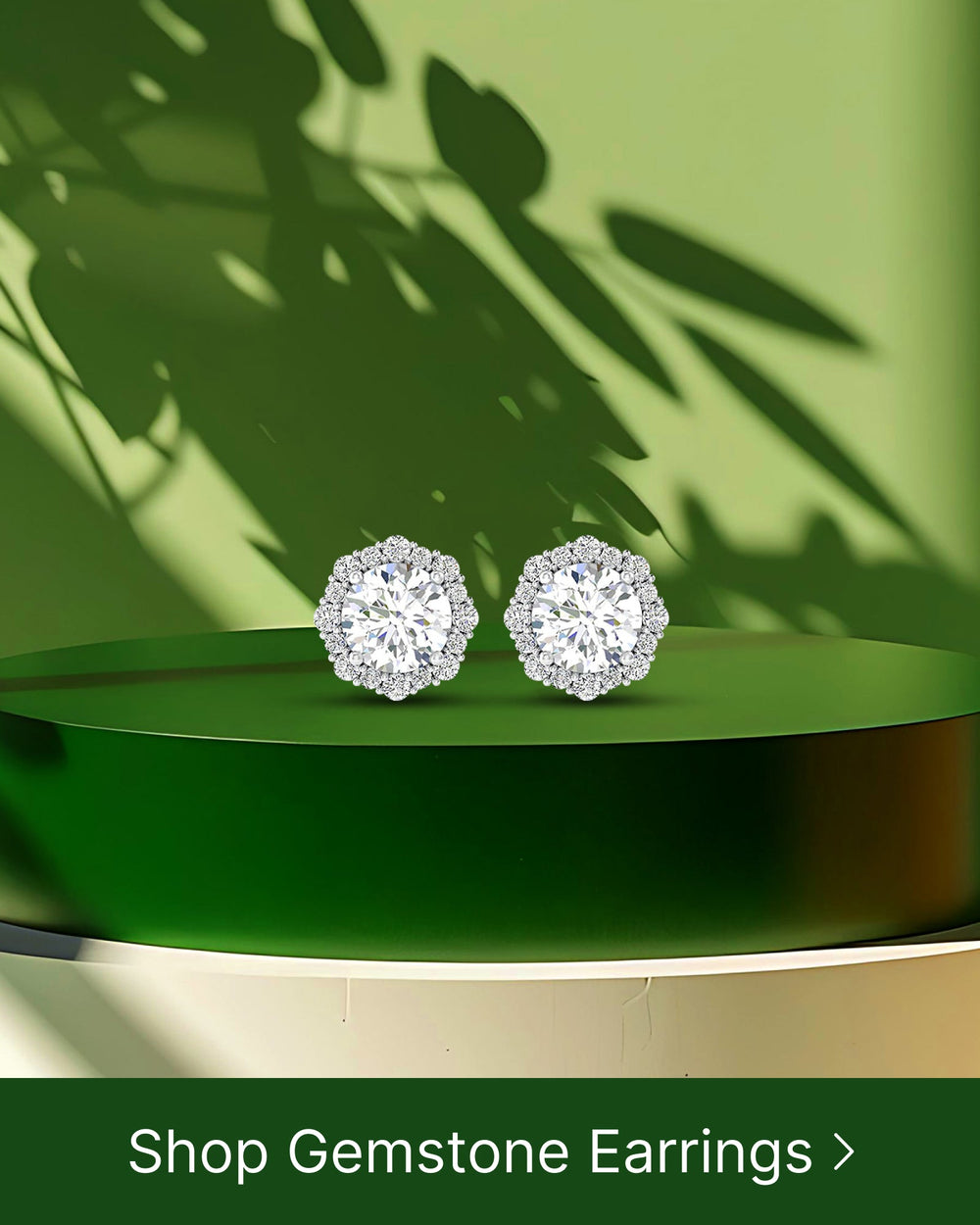Zircon and diamond are two popular gemstones that often confuse people due to their similar appearance. However, they have distinct differences when it comes to their formation, physical properties, optical characteristics, value, and use in jewelry. Understanding these differences will help you make an informed decision when choosing between zircon and diamond. Let's delve into each aspect in detail.
Understanding Zircon and Diamond
Zircon and diamond are two fascinating minerals that have captivated humans for centuries. These precious gemstones are not only visually stunning but also hold great scientific significance. To truly appreciate their beauty and value, it is important to understand the intricate processes that lead to their formation.
The Formation of Zircon
Zircon, a mineral that has been cherished for its brilliance and clarity, is primarily formed in igneous rocks. These rocks, such as granite and syenite, are created through volcanic activity. When molten rock, known as magma, rises to the Earth's surface during volcanic eruptions, it cools and solidifies, giving birth to zircon crystals.
During this cooling process, zirconium silicate, the main component of zircon, starts to crystallize. As the magma gradually cools, the zircon crystals grow, forming intricate structures within the igneous rocks. The colors of zircon can vary greatly, ranging from vibrant yellows and browns to striking reds and greens, adding to its allure and desirability as a gemstone.
It is fascinating to think that each zircon crystal we see today is a testament to the violent volcanic eruptions that occurred millions of years ago. These eruptions, while destructive in nature, played a crucial role in creating the beautiful gemstone that we admire today.
The Formation of Diamond
Diamonds, on the other hand, have a much more mysterious and complex origin. Unlike zircon, diamonds are not formed through volcanic activity but rather deep within the Earth's mantle, under unimaginable pressure and intense heat.
Deep beneath the Earth's surface, carbon atoms exist in abundance. Under the right conditions, these carbon atoms can undergo a remarkable transformation, crystallizing to form the unique crystal structure of diamonds. However, the journey from carbon atoms to dazzling diamonds is far from easy.
Over millions of years, as tectonic forces push and pull the Earth's crust, some carbon-rich rocks are transported deep into the mantle. Here, at depths of around 150 to 200 kilometers, the conditions become incredibly hostile. The immense pressure and extreme temperatures, reaching up to 2,200 degrees Celsius, subject the carbon atoms to an extraordinary transformation.
Under these extreme conditions, the carbon atoms are forced to align perfectly, bonding together in a precise arrangement that gives diamonds their exceptional hardness and brilliance. This process, known as crystallization, occurs over an extended period, often taking millions of years.
It is awe-inspiring to think that the diamonds we cherish today are the result of these extraordinary geological forces. From the depths of the Earth's mantle, these precious gemstones make their way to the surface through volcanic eruptions, where they are discovered and admired for their unparalleled beauty.
As we delve into the fascinating world of zircon and diamond, we begin to appreciate the intricate processes that shape our planet and give rise to these remarkable minerals. From the fiery depths of volcanic eruptions to the unfathomable pressures deep within the Earth, the formation of zircon and diamond is a testament to the immense power and beauty of nature.
Physical Properties that Differentiate Zircon and Diamond
Zircon and diamond possess distinct physical properties that set them apart. Let's explore these properties in more detail.
Color Variations in Zircon and Diamond
Zircon exhibits a wide range of colors, from colorless to vibrant hues like yellow, brown, blue, and green. These color variations are due to impurities present in the crystal lattice. Zircon's ability to display such a diverse array of colors makes it a popular gemstone choice for jewelry. Whether you prefer a classic colorless zircon or a striking blue zircon, there is a wide range of options to suit your personal style.
On the other hand, diamonds are renowned for their colorlessness, with the rarest and most valuable diamonds being completely colorless. The absence of color in diamonds is highly prized, as it allows the gem to reflect and refract light in a way that creates a dazzling sparkle. However, it is worth noting that diamonds can also come in various fancy colors, such as pink, blue, and yellow, which are caused by different impurities or structural defects.
Hardness and Durability Comparison
When it comes to hardness, diamonds are the clear winners. Diamonds have a Mohs hardness of 10, making them the hardest natural material on Earth. This exceptional hardness is due to the strong carbon-carbon bonds present in the diamond's crystal structure. The hardness of diamonds makes them extremely resistant to scratching and abrasion, making them ideal for everyday wear in jewelry.
Zircon, while still considered a relatively hard gem, falls around 6.5 to 7.5 on the Mohs scale. This difference in hardness affects their durability. Although zircon is durable enough for most jewelry applications, it is more prone to scratches and wear over time compared to diamonds. Therefore, if you are looking for a gemstone that can withstand the test of time and retain its pristine appearance, diamonds are the superior choice.
It is important to note that while diamonds are known for their exceptional hardness, they are not indestructible. Diamonds can still chip or fracture if subjected to extreme force or impact, so proper care and maintenance are essential to ensure their longevity.
In conclusion, the distinct physical properties of zircon and diamond make them unique and desirable gemstones. Whether you are drawn to the vibrant colors of zircon or the timeless elegance of diamonds, both gemstones offer their own allure and beauty.
The Optical Characteristics of Zircon and Diamond
Optical characteristics play a crucial role in the appearance of gemstones. These characteristics determine how light interacts with the gemstone, resulting in various visual effects that make each stone unique and captivating.
When it comes to zircon and diamond, their optical properties contribute to their exceptional beauty and desirability as gemstones.
Brilliance and Fire in Zircon and Diamond
Zircon possesses impressive brilliance and fire, which refers to its ability to disperse white light into a spectrum of colors. This captivating play of light makes zircon a mesmerizing gemstone that catches the eye. When light enters zircon, it undergoes a phenomenon called dispersion, where different wavelengths of light are separated, creating a stunning display of colors. The high refractive index of zircon enhances its brilliance, making it a truly dazzling gemstone.
Diamonds, too, exhibit exceptional brilliance and fire due to their superior refractive index and excellent light performance. The unique arrangement of carbon atoms in a diamond allows it to bend and reflect light in a way that maximizes its sparkle. The high refractive index of diamond ensures that light is efficiently reflected back to the viewer, creating a mesmerizing display of brilliance and fire.
The Effect of Cut on Sparkle
The way a gemstone is cut greatly impacts its sparkle and overall visual appeal. Both zircon and diamond can be cut into various shapes, such as round, princess, or pear. However, due to the differences in their optical properties, zircon and diamond will exhibit varying levels of sparkle depending on their cut quality.
A well-cut diamond tends to exhibit a higher level of sparkle than zircon. This is because diamonds have a higher refractive index and a greater ability to reflect light. The precision of the diamond's cut determines how effectively it can reflect and refract light, maximizing its brilliance and fire. Diamond cutters carefully analyze the stone's optical properties to create cuts that enhance its natural beauty.
On the other hand, zircon, although still capable of displaying remarkable sparkle, may not achieve the same level of brilliance as a well-cut diamond. The lower refractive index of zircon affects the way light interacts with the stone, resulting in a slightly different visual effect. However, skilled gem cutters can still bring out the best in zircon by carefully considering its optical properties when crafting the cut.
In conclusion, the optical characteristics of zircon and diamond contribute to their unique beauty and visual appeal. Whether it's the mesmerizing play of light in zircon or the exceptional brilliance of a well-cut diamond, these gemstones continue to captivate and enchant jewelry enthusiasts around the world.
Evaluating the Value of Zircon and Diamond
Several factors influence the value of zircon and diamond.
Factors Influencing Zircon Value
Zircon's value is influenced by multiple factors, including its color, clarity, size, and origin. Vividly colored zircons with high clarity are generally more valuable. Additionally, zircons sourced from specific regions renowned for producing high-quality gemstones may command a higher price tag.
Factors Influencing Diamond Value
Diamonds are valued based on the famous 4Cs: carat weight, color, clarity, and cut. The carat weight refers to the size of the diamond, while color and clarity grades assess the absence of any color or imperfections within the stone. Lastly, the cut of a diamond determines its brilliance and overall visual appeal. These factors collectively contribute to a diamond's value.
Zircon and Diamond in Jewelry
Both zircon and diamond find extensive use in the world of jewelry.
Zircon Jewelry Styles and Settings
Zircon's versatile color range and affordable price point make it a great choice for jewelry. It is often used in various jewelry styles and settings, including rings, necklaces, earrings, and bracelets. From vintage-inspired designs to modern, sleek settings, zircon offers endless possibilities for jewelry enthusiasts.
Diamond Jewelry Styles and Settings
Diamonds have long been the epitome of luxury and glamour in the world of jewelry. From engagement rings to timeless heirlooms, diamonds are the go-to choice for those seeking exquisite pieces. Diamond jewelry comes in a variety of styles and settings, ranging from classic solitaires to intricate pave arrangements, catering to different tastes and preferences.
In conclusion, while zircon and diamond may share some similarities in appearance, their distinct differences in formation, physical properties, optical characteristics, value, and use in jewelry make each gemstone unique. By understanding these differences, you can make an informed decision when considering zircon or diamond for your next jewelry purchase. Remember, whether you decide to embrace the mesmerizing allure of zircon or the timeless elegance of diamond, both gemstones have their own special place in the world of jewelry.




